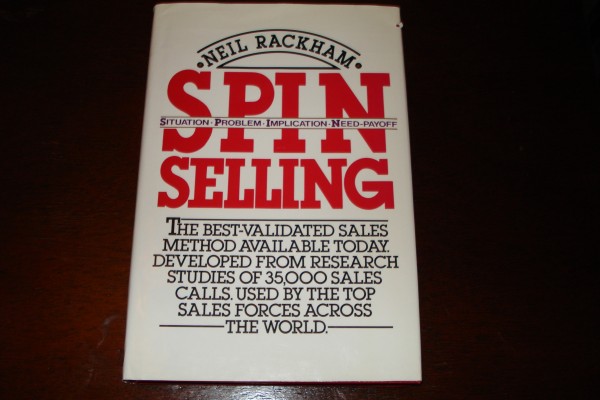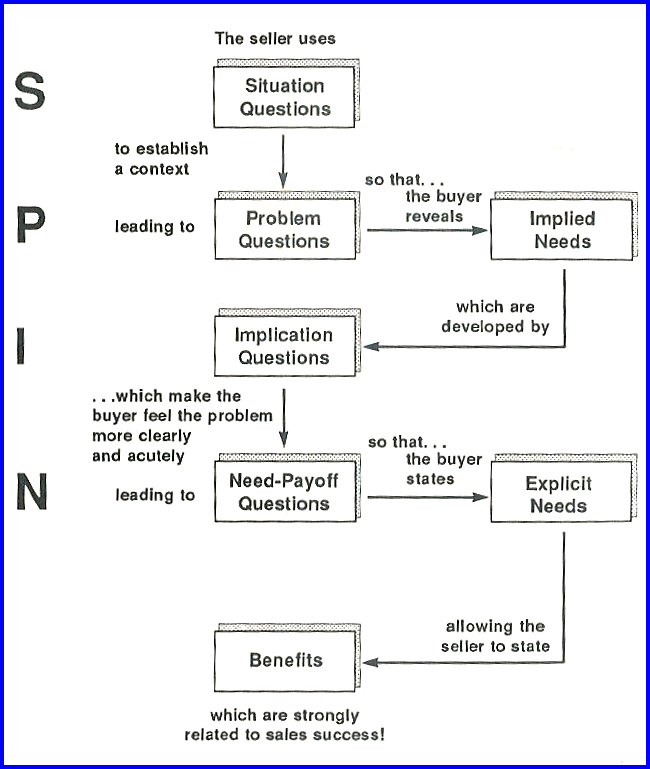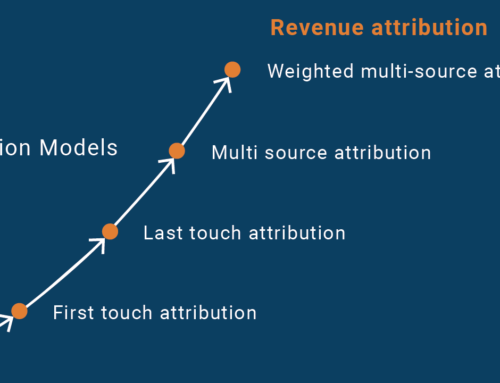Most of us don’t have a lot of leeway when we’re selling online.
The pressure is on with shortening attention spans, numerous competitors, and consumer skepticism. Being too pushy or asking a question at an inopportune time can put off the leads you’ve worked so hard to get.
Being aggressive might work for an ecommerce store that sells $5 t-shirts, but it probably won’t work for you. If you’re selling something complicated or expensive enough to warrant a sales funnel, a different approach will win you more customers.
The psychology shifts with expensive, complicated products or services. Prospects view the transaction as less of a commodity and more of the beginning of a relationship with the salesperson. How well you sell yourself becomes critical.
A Data-Driven Approach to Close More Sales
Why do so many businesses get this wrong? And what can we do to get it right?
Those are the mysteries psychologist Neil Rackham set out to solve.

Image Credit: Ok I Trade
Neil Rackham is a psychologist and founder of Huthwaite, a research and consulting firm. He and his team spent 12 years observing over 35,000 sales calls and gathering data. They dissected the interactions to determine the most important components of a successful sale and how to put them together to increase the likelihood of success.
Their results were unexpected. Rackham transformed them into a system – SPIN Selling – you can implement to close more sales. The first step of embracing the SPIN Selling system begins with questioning a few major assumptions of conventional sales thinking.
Questioning Conventional Sales Wisdom
The SPIN Selling research was shocking because so many of the findings went against the grain of conventional sales wisdom. There were (and still are) countless sales books and training courses out there repeating a set of fixed beliefs about what makes a salesperson effective.
Rackham’s research calls some of those beliefs into question, revealing that successful salespeople might not have such a great understanding of why they’re so successful and their colleagues aren’t. Here are three major beliefs the SPIN Selling research revealed were misconceptions when it came to major sales:
“Always be Closing”
Perhaps the most pervasive misconception from sales teams is the idea that aggressively closing the sale is the single most important factor in determining a successful sales outcome.
The SPIN Selling research found that the emphasis on obtaining the prospect’s commitment is misplaced. The average number of closing attempts a salesperson used during a sales call did not have a noticeable positive impact on the closing rate. With high-cost transactions, aggressive closing was actually more likely to scare prospects away and ruin the sales opportunity.
Here’s what Rackham had to say about pushy closing techniques:
Closing techniques may increase the chances of making a sale with low-priced products. With expensive products or services, they reduce the chances of making a sale. – SPIN Selling, pg. 33
An Emphasis on Overcoming Objections
Conventional sales wisdom also stresses being prepared to handle numerous buying objections and overcoming them. It wasn’t uncommon for the salespeople Rackham observed to prepare for sales calls by listing potential objections and rehearsing their responses to them.
The research revealed this wasn’t as important as a lot of people thought. In the majority of the successful sales calls Rackham and his team observed, customer objections weren’t really a big factor.
Skilled people receive fewer objections because they have learned objection prevention, not objection handling. – SPIN Selling, pg. 118
Because Rackham believed sellers were usually responsible for the objections (as opposed to the prospects), he thought the focus on handling objections was misguided:
“The professional salesperson,” the instructor began, “welcomes objections because they are a sign of customer interest. In fact, the more objections you get, the easier it will be for you to sell.” The class, duly impressed, wrote this down. Meanwhile I groaned behind my mandatory visitor’s smile. – SPIN Selling, pg. 117
It isn’t a given that the prospect will have objections. They can be prevented if the salesperson creates a high enough perceived value. And they do that by asking the right questions.
The Importance of Asking Open-Ended Questions
“Ask a lot of open-ended questions.”
Rookie sales professionals and veterans alike probably hear that advice daily. The idea is to get the prospect talking; that way the sales person can draw out insights and act on them in a way that advances the sale.
The SPIN Selling research found that the preoccupation with open-ended questions has been blown way out of proportion. Rackham noted that the average number of open-ended questions created no noticeable difference between closing rates.
In other words, none of our studies showed that the classic distinction between open and closed questions has any meaning in high-value sales calls. – SPIN Selling, pg. 16
The type of the question – closed versus open-ended – mattered much less than the question’s purpose. Some of the most successful salespeople used many closed questions, but they used them to obtain critical information and advance the sale.
A Systematic Approach to Streamline Your Sales Process
Conventional sales tactics – overcoming objections, asking a lot of open-ended questions, and pushing for the close – persist because they work well for low-ticket items that don’t require any follow up. While they might work well for the $5 t-shirt shop, they won’t be as effective for 99% rest of us.
Rackham used the insights from his research to create a system to close more “major sales” (when the process usually requires multiple interactions between the buyer and prospect before a sale is made). This approach works for B2B sales, B2C sales with at least a moderate price, and for service providers.
The key is creating massive perceived value in the eyes of your prospects:
In a small sale the customer is less conscious of value. As the size of the sale increases, successful salespeople must build up the perceived value of their products or services. The building of perceived value is probably the single most important selling skill in larger sales. – SPIN Selling, pg. 8
How can you do this? Let’s break down the SPIN Selling process and how you can apply it in your own business:
A Breakdown of The Spin Selling Approach
Rackham breaks down the sales process into 4 steps.
- Preliminaries: warming up the prospect. This is the part where you introduce yourself and ask a few innocuous questions to make the prospect feel comfortable.
- Investigation: this step, according to Rackham, is the most important part of the entire sales process. You’ll ask prospects a series of questions to find out more about their business, problem areas, and the needs you can fulfill. It’s an information exchange that can make or break your chances of success.
- Demonstrating capability: showing your prospect that you’re able to provide the solution to the needs identified in the investigation stage. This is where testimonials, social proof, and other trust signals can push prospects on the edge about doing business with you to commit.
- Obtaining commitment (“closing”): here’s where you wrap up the process by asking the prospect to commit to the sale, or a lesser degree of action – like scheduling a demo or joining your email list – that advances the sale.
A lot of salespeople obsess about getting to the “closing” stage as quickly as possible. But in most transactions, it’s how you handle the investigation stage that will determine whether your sale is a failure or a success. Doing this well starts and ends with asking the right questions.
Acing the Investigation Stage with SPIN Questions

Image Credit: San Diego State University
Rackham recommends asking 4 different types of questions to ace the investigation stage and turn more prospects into customers. Salespeople got the best results from asking these questions in order, though it’s possible to jump around depending on the prospect. The “SPIN” in SPIN Selling is an acronym of the 4 types of sales questions (Situation, Problem, Implication, and Need-Payoff) to ask for the best results.
Here’s how to handle each one:
Situation Questions
Kick off the investigation stage with a few situation questions. These are the questions you ask to find out the background information you need to make sense of the prospect’s situation and how you can help them.
Answering these kind of questions can bore prospects after awhile, so it’s important not to take it overboard. Doing some research beforehand will help you focus your questions on information that isn’t publicly available.
Here are some examples of good situation questions:
- “What type of software do you run here?”
- “How many customers do you have?”
- “How do you get most of your customers?”
- “What is your current churn rate?”
Problem Questions
After prospects fill you in on the situation, their problems might seem obvious to you. You might be tempted to launch into the benefits of what you’re selling. But resist the urge! Asking questions that get prospects to acknowledge the problem on their own – instead of bringing it up directly – will lead to far more sales.
Like a lawyer in the courtroom, you can lead prospects to the realization you want them to have by asking the right questions. Problem questions probe for information to discover what about the prospect’s current situation is creating frustration or pain. This sets you up perfectly for the next step, and it might even draw out some interesting concerns you would’ve overlooked.
Here are some examples of good problem questions:
- “What’s the biggest problem you’ve faced when managing your sales pipeline?”
- “Is it difficult for your sales team to keep up with peak demand?”
- “Are you satisfied with your current software?”
- “When someone from your sales team goes on vacation, what happens with the leads they were supposed to follow up with?”
Implication Questions
Implication questions are probably the most critical part of the process. You’ve found out more about the prospect’s situation and got them to identify their problem areas. Now’s the time to make the prospect feel the pain of those problems in a way that motivates them to act.
The pain your prospect is feeling right now might be irritating, but it’s comfortable. Non-action is the status quo. Without the proper motivation, it’s easier to stay in that comfort zone instead of shelling out the cash to fix it.
Implication questions get prospects to understand the full extent of not fixing their problem. The goal here is to make the prospect identify the effects, consequences, and long-term impact of letting the problem continue unchecked.
Just like with the problem questions, resist the temptation to do this for the prospect. It’s essential they identify, understand, and appreciate the negative consequences; it will make them more motivated to take you up on your solution.
Here are some examples of implication questions:
- “What’s the average cost of getting a new customer when a lead doesn’t make it to the end of your sales pipeline?”
- “How much time do you spend dealing with complaints from unhappy customers?”
- “What’s the financial impact on your business when your sales team can’t keep up with peak demand?”
- “What are the time and financial effects on your operation when your software crashes?”
Need-Payoff Questions
You just motivated prospects to act by having them identify the consequences of not fixing their problems. Need-payoff questions push them over the edge by getting them to see the benefits of your solution.
Once again, the idea is to use questions to get the prospect to describe these benefits instead of doing it yourself. It’s much more persuasive that way. Need-payoff questions get prospects’ imaginations racing about how different their lives could be if their problem were solved. The more benefits you can draw out, the higher the perceived value of your solution (and the better the chance of closing the sale).
Here are some examples of need-payoff questions:
- “Do you see the value if your sales team could keep up with peak demand?”
- “Why is it important to tighten up your sales pipeline?”
- “How would it help you and your business if you could spend less time dealing with dissatisfied customers?”
- “If you could reduce your churn rate by half, what impact would that have?”
Make the Most of Every Opportunity
Using a smart CRO strategy to turn your website into an lead generation platform is crucial to your long-term success. But getting leads is just the first step. You still have to motivate those leads to become buyers in order to capitalize on your opportunities.
That’s where SPIN Selling can help. You use data to drive conversion optimization decisions, and now you can use the data from over 35,000 sales calls to streamline your sales process. Give the SPIN Selling system a shot. You can leverage the insights of Rackham’s research, stop second-guessing your approach, and make the most of every opportunity.
What do you struggle the most with about selling? Do you think giving the SPIN Selling approach a try would help? Leave a comment below and let me know.




